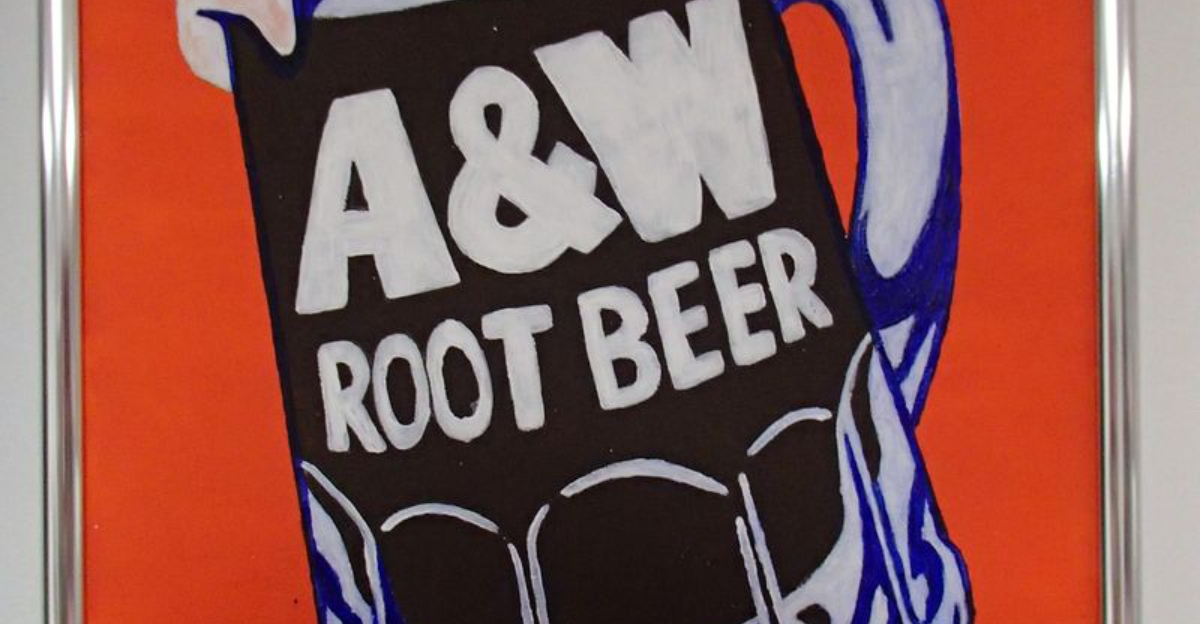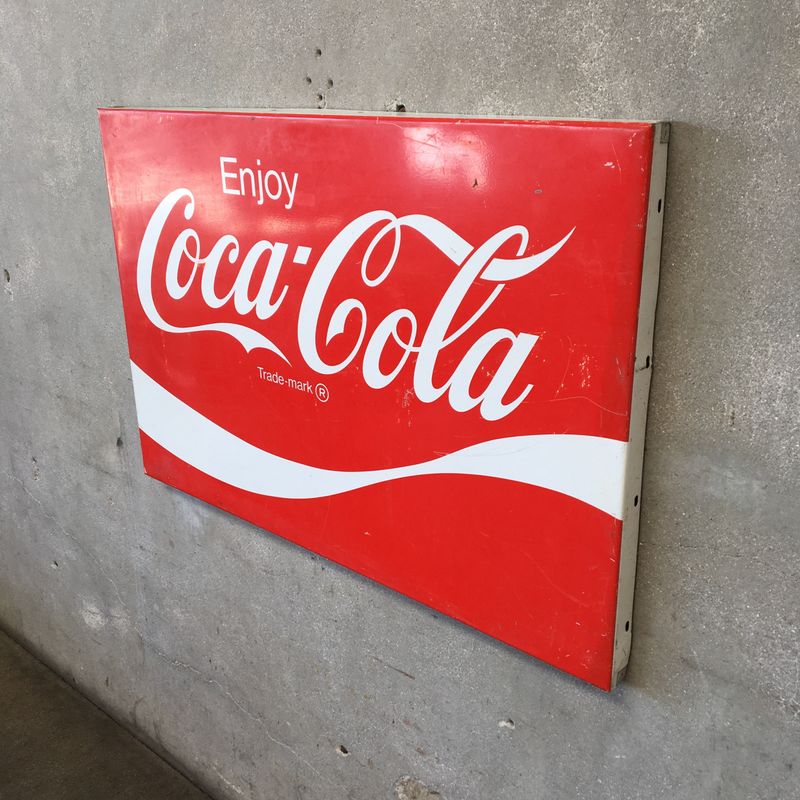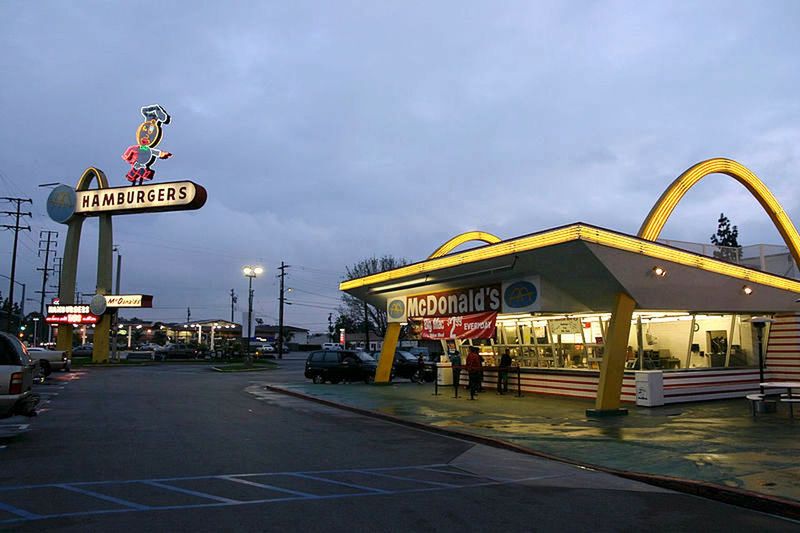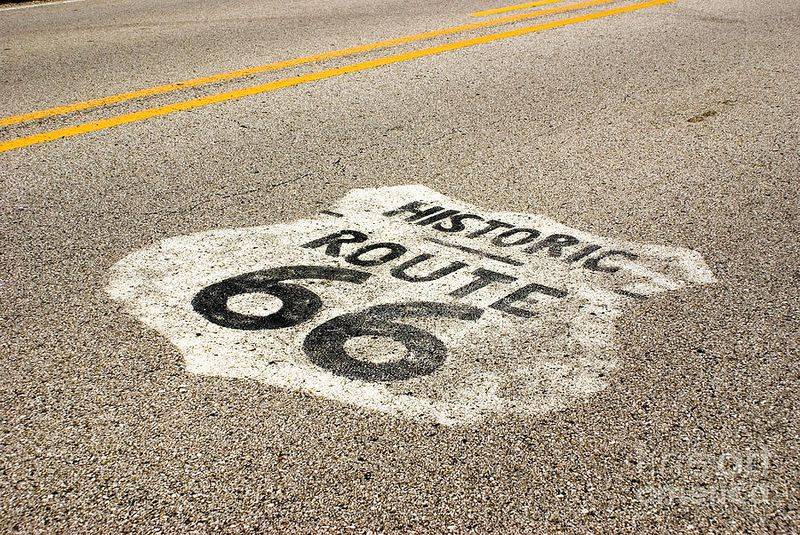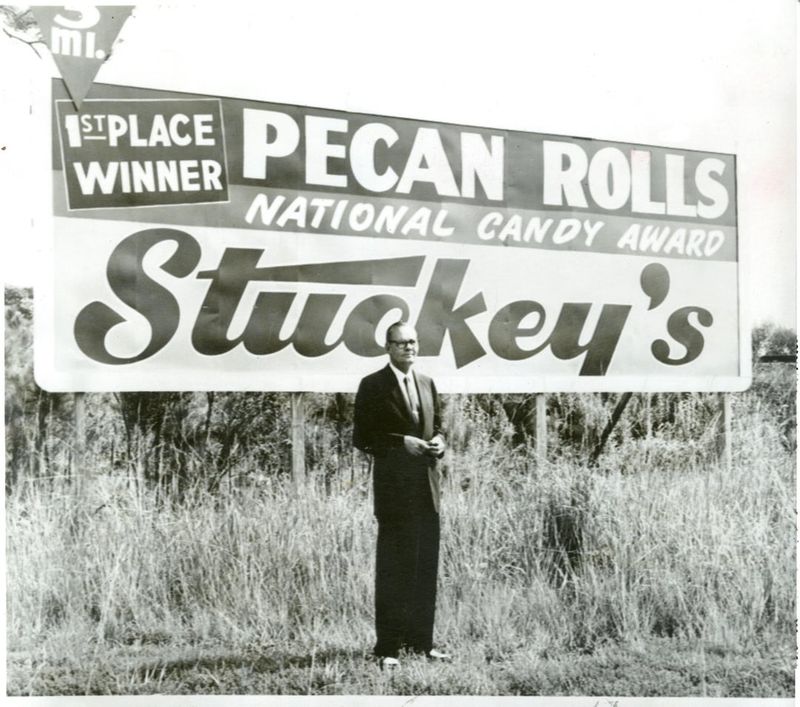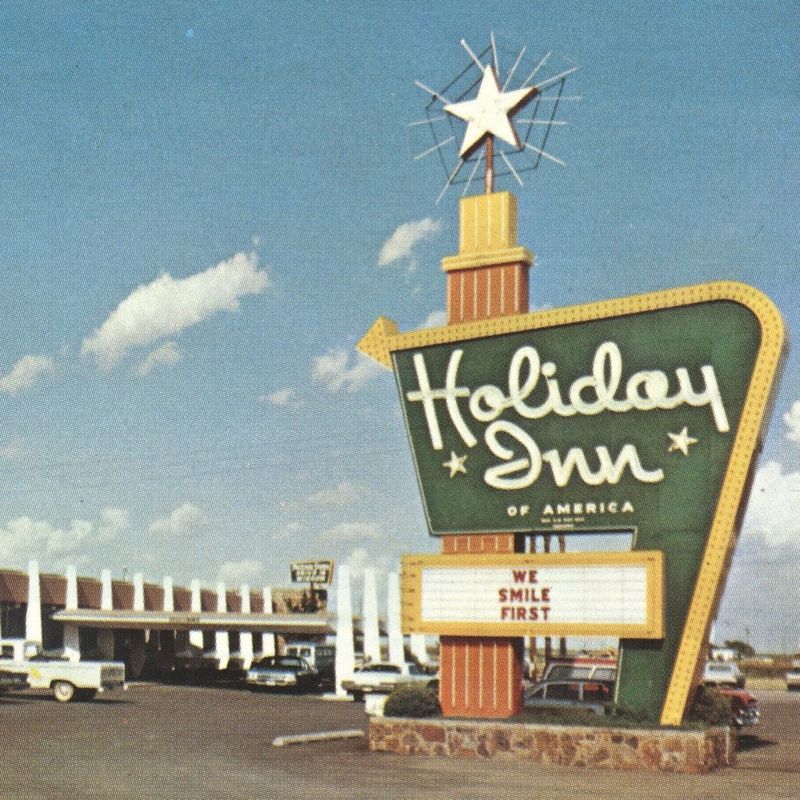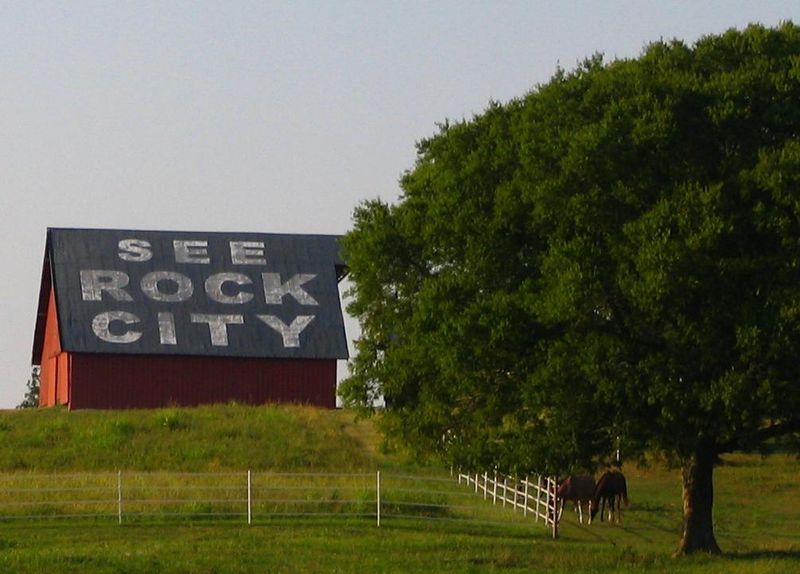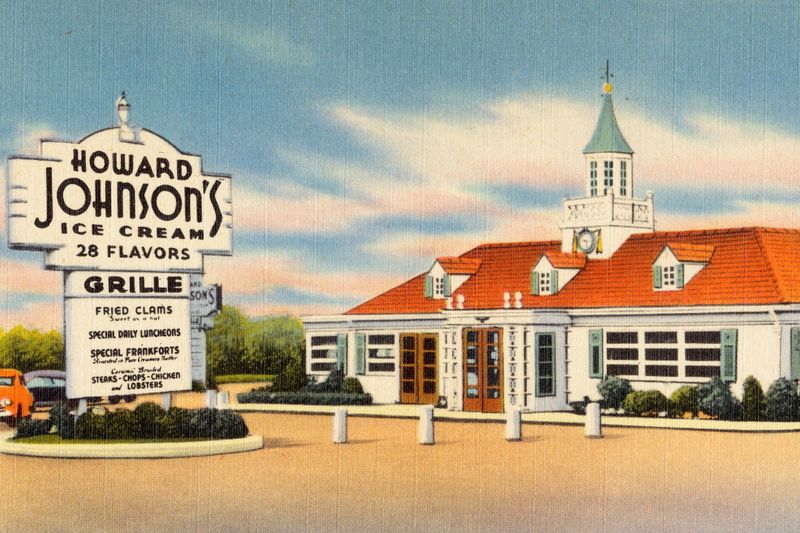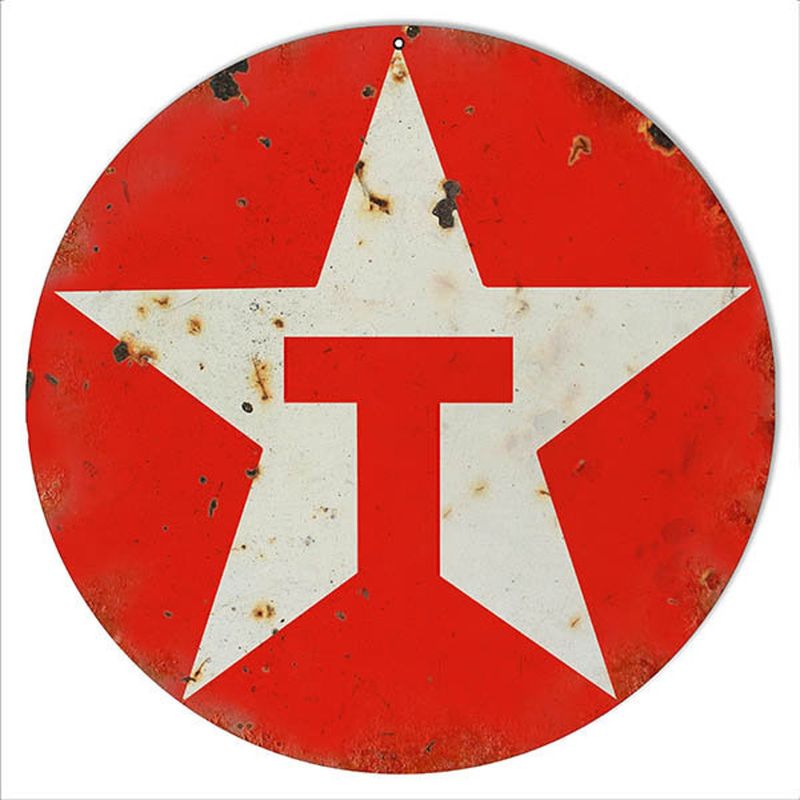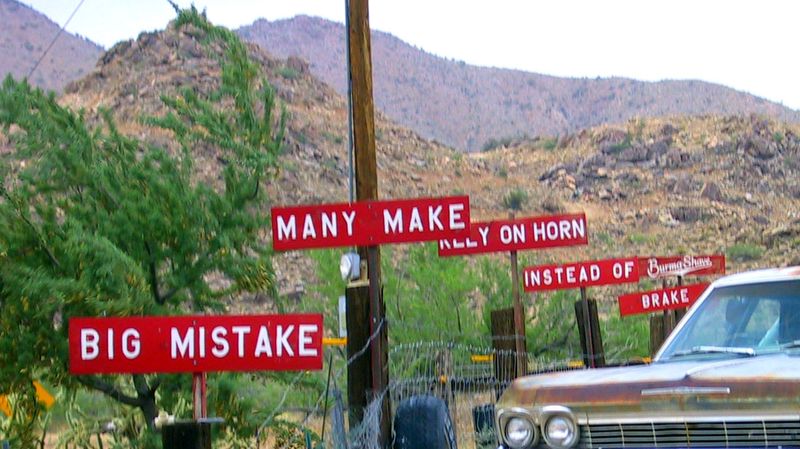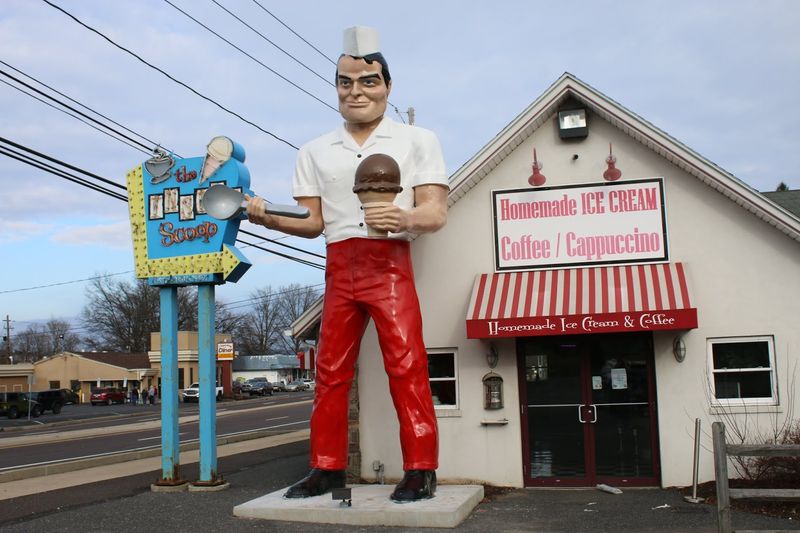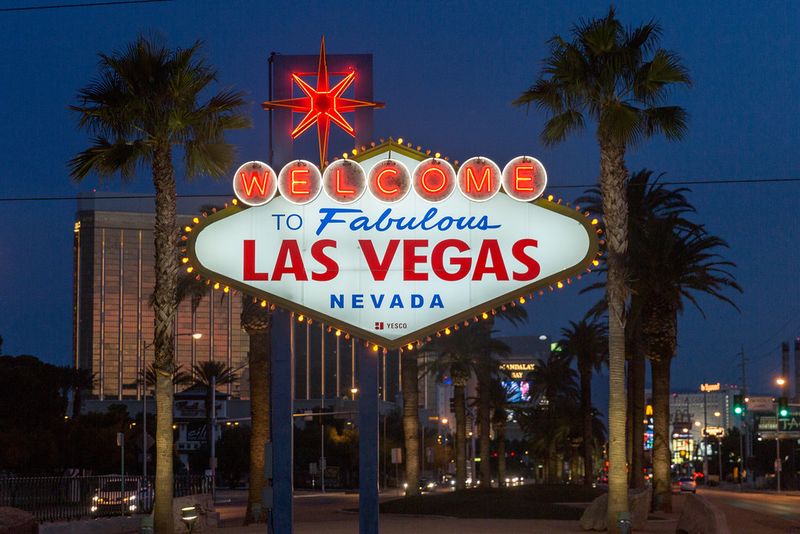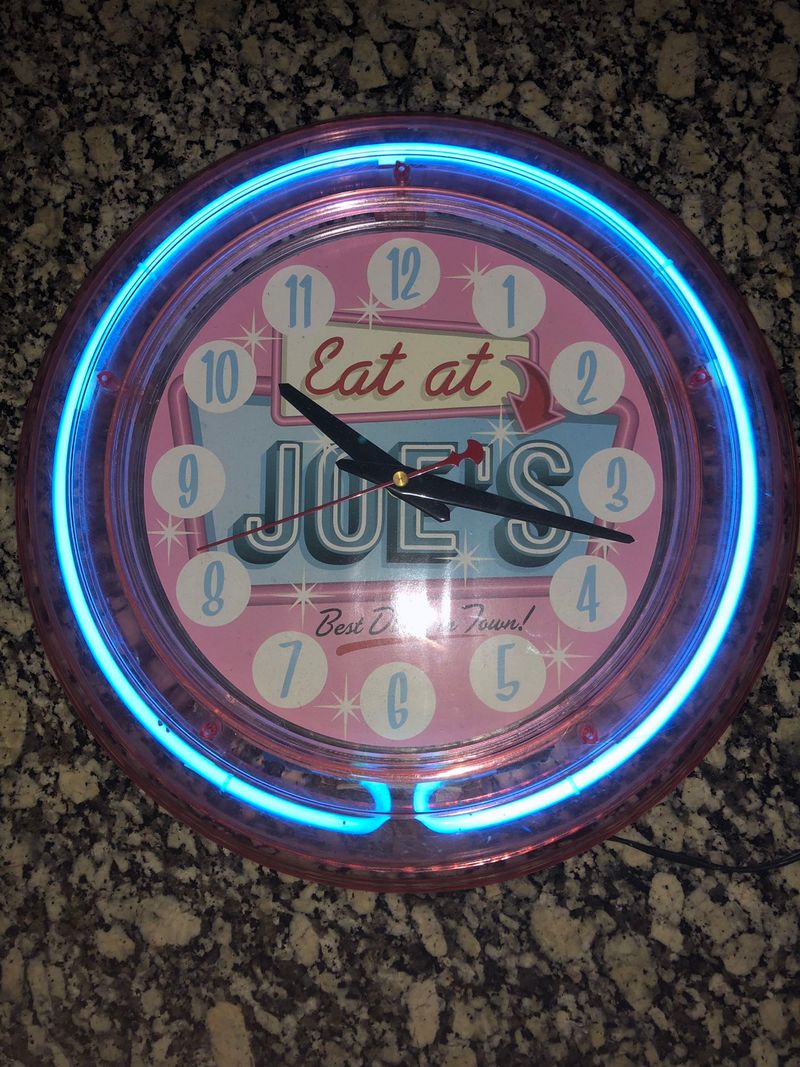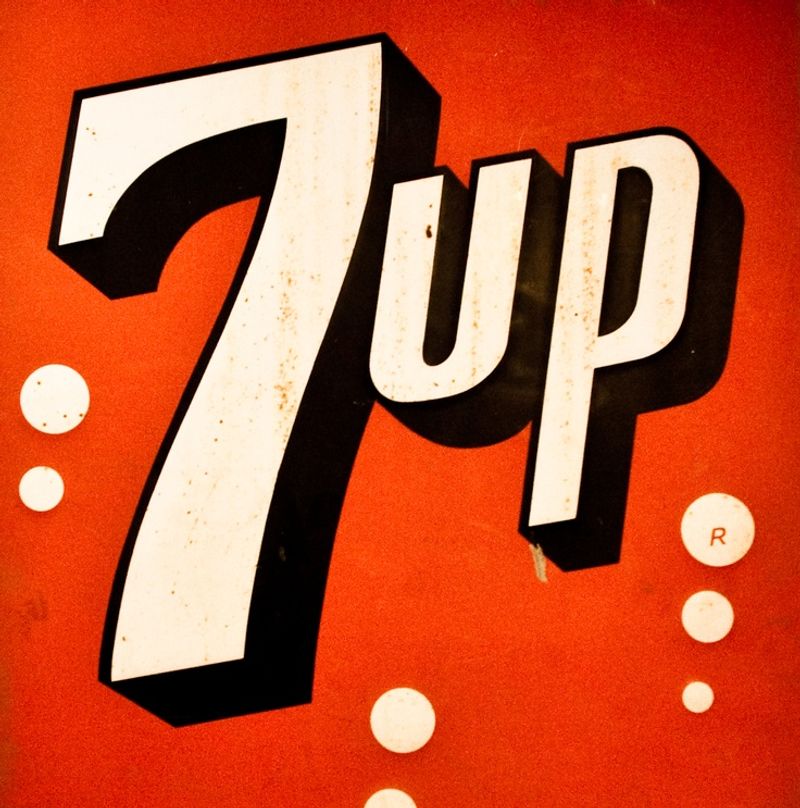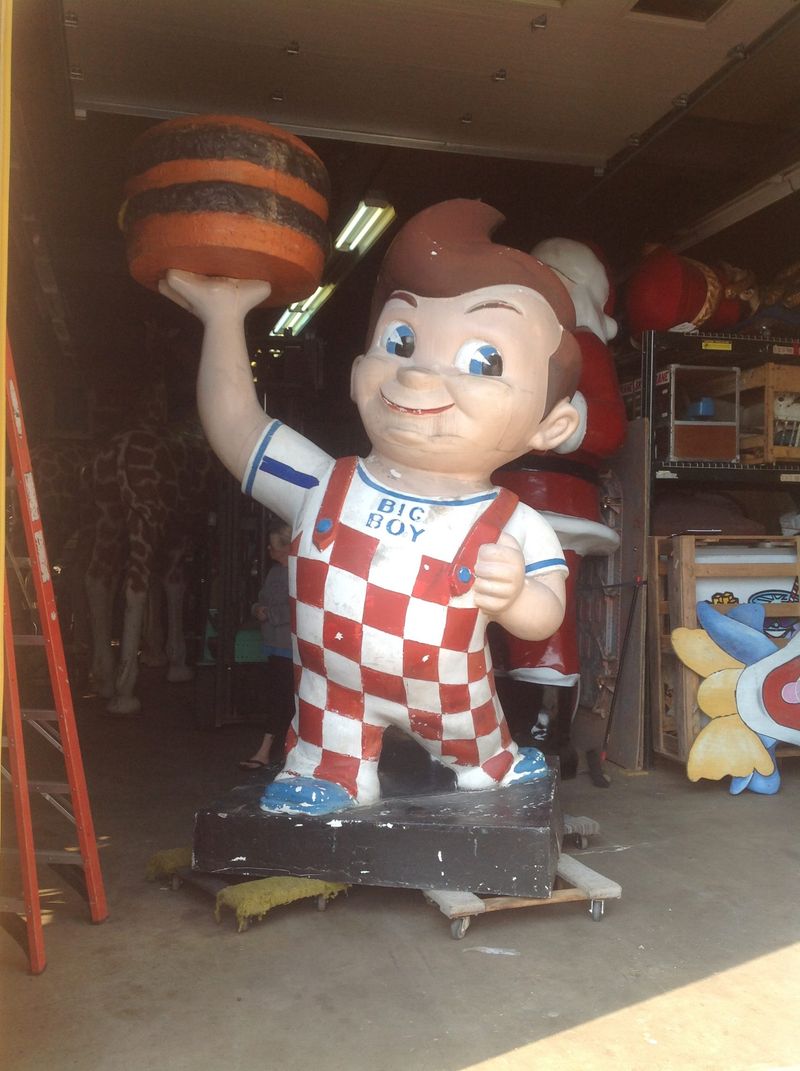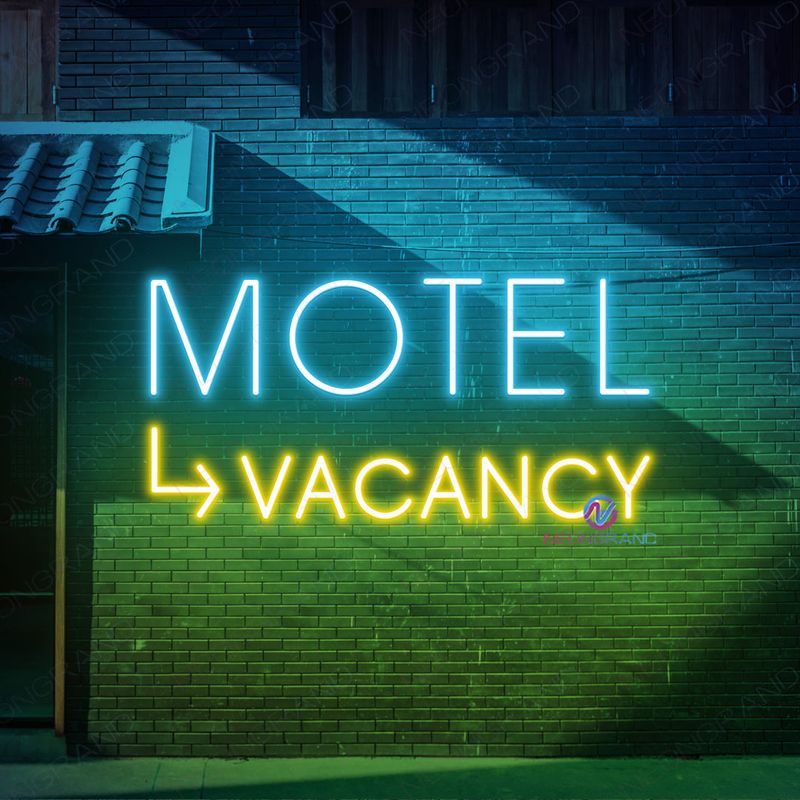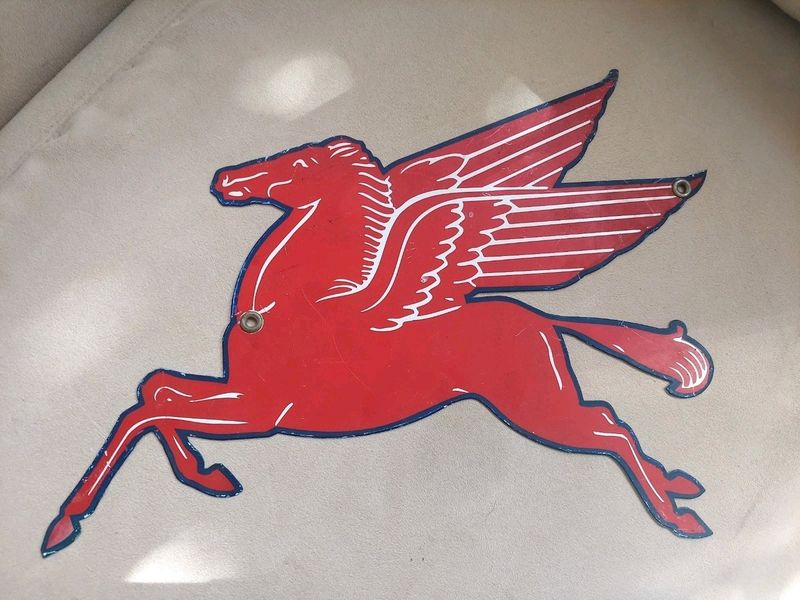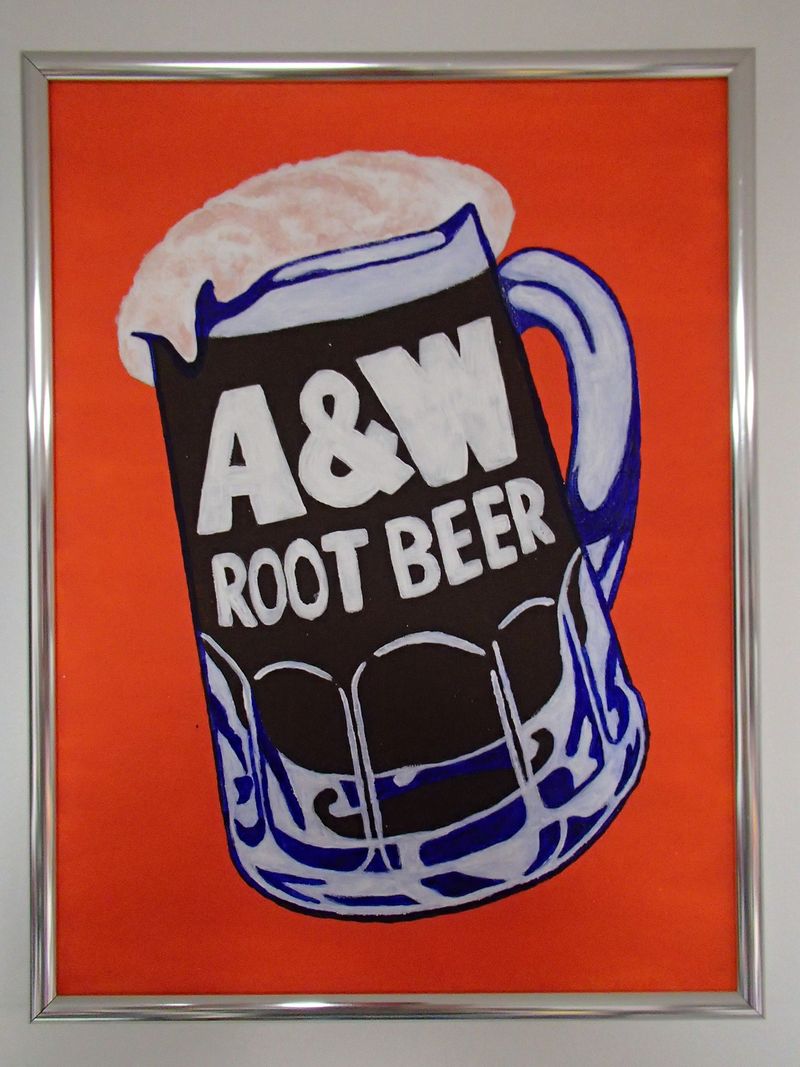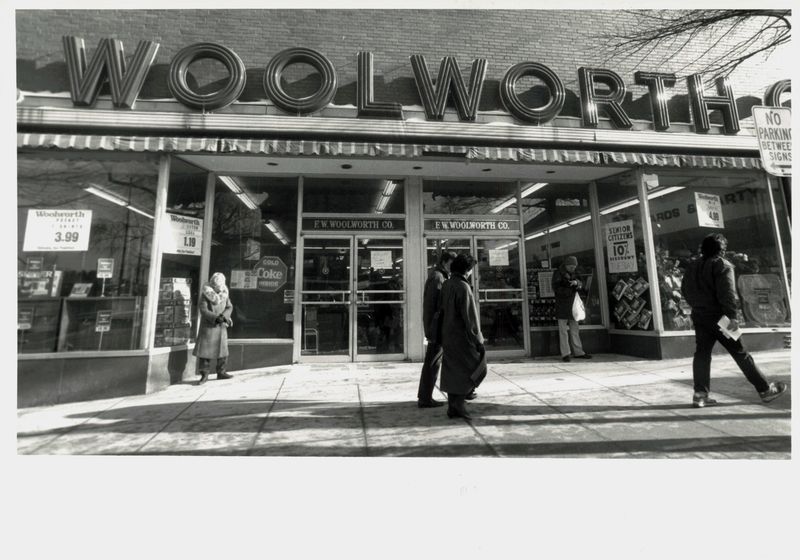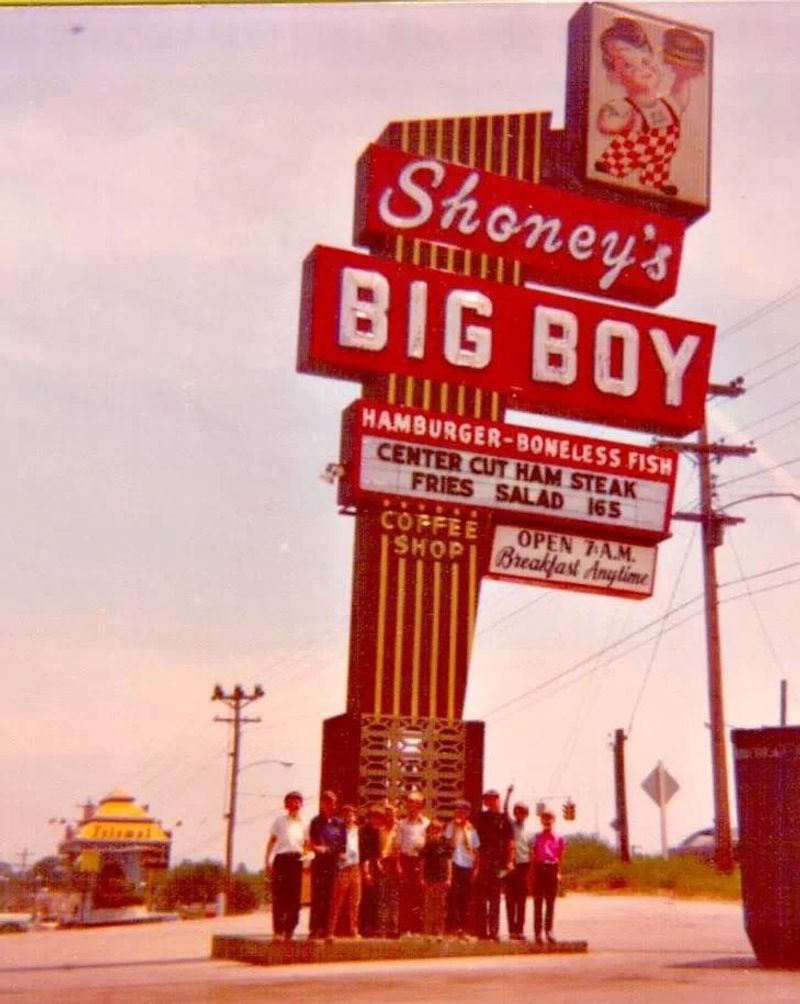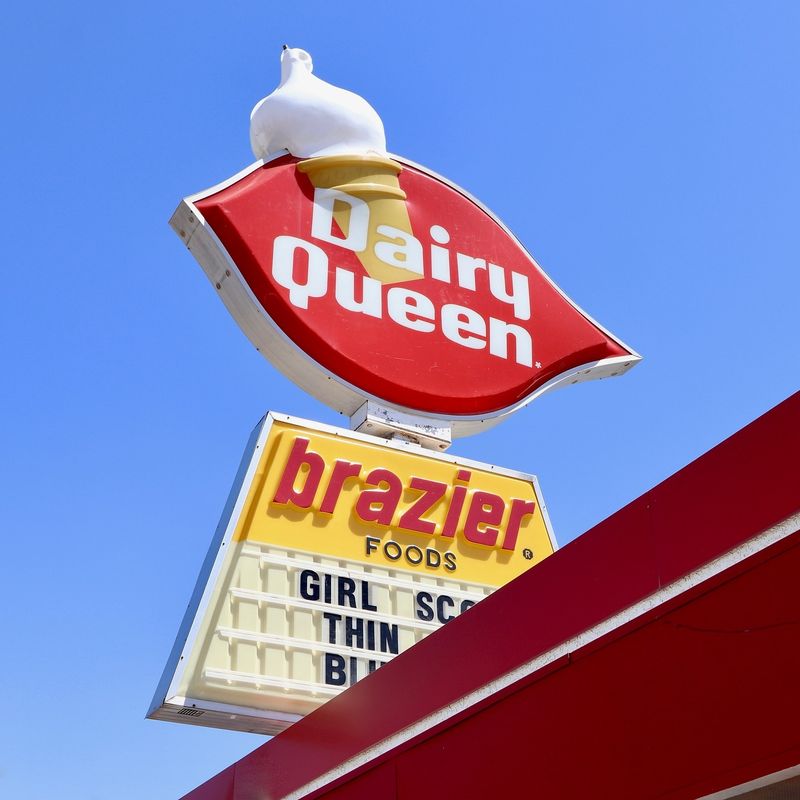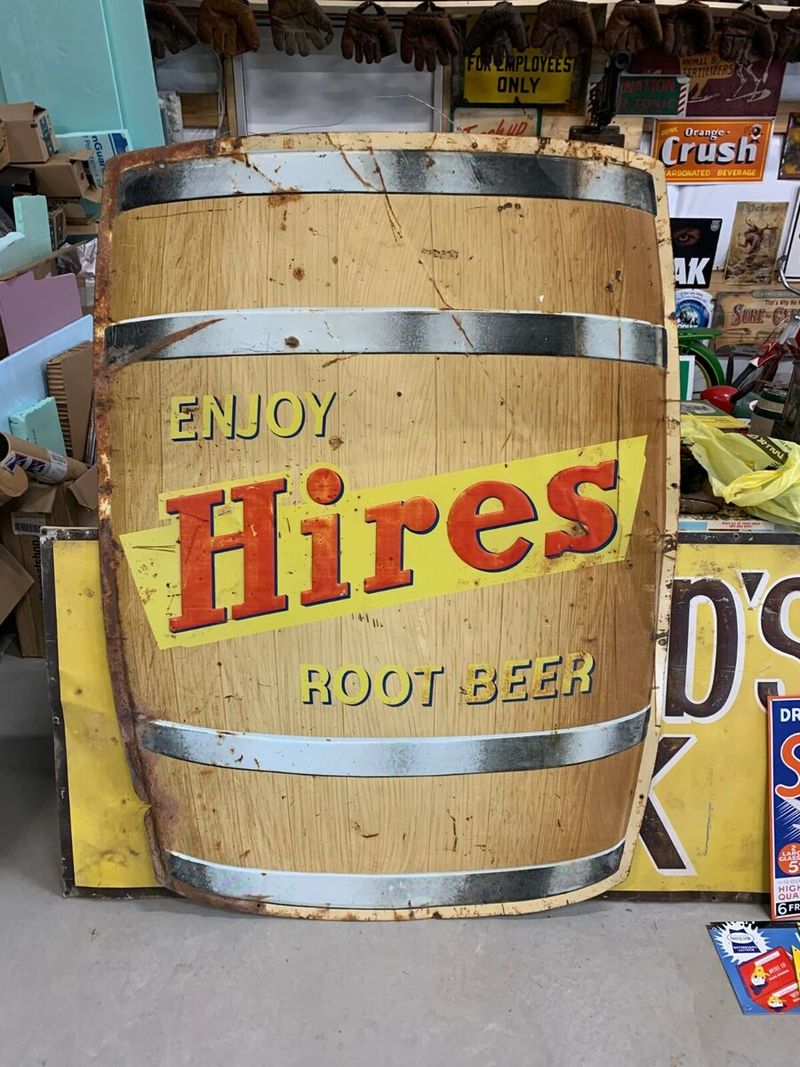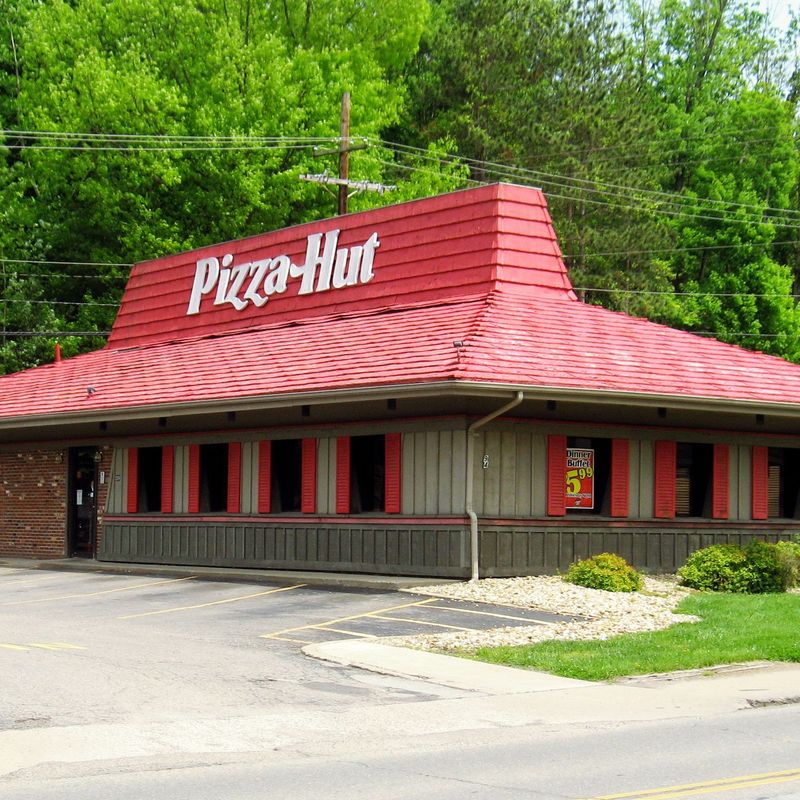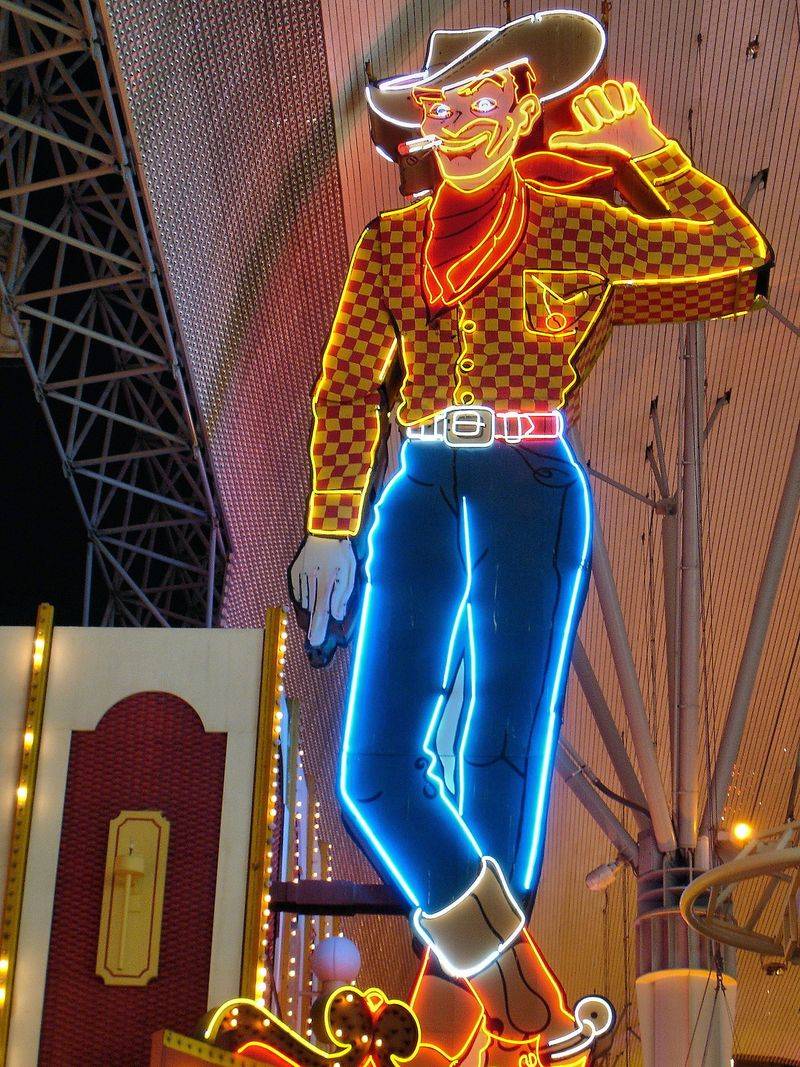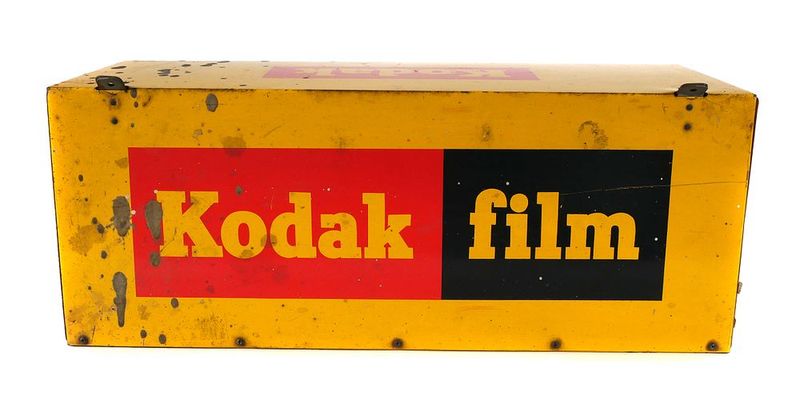The landscape of America has been dotted with iconic signs that capture the essence of nostalgia and history. These signs serve as cultural landmarks, often evoking memories of road trips, meals at diners, and the golden age of travel. From neon beacons to painted barns, these relics tell stories of a bygone era.
1. Coca-Cola “Enjoy a Coke” Sign (1970s)
Few symbols are as universally recognized as the Coca-Cola sign. In the 1970s, these red-and-white beauties adorned diners and billboards nationwide. Imagine the allure of the iconic script logo, promising refreshment. These signs were more than advertisements; they were symbols of Americana. The familiar font and design became synonymous with a sense of belonging. For many, spotting a Coca-Cola sign meant a pit stop for a cold drink during road trips. These signs weren’t just roadside attractions; they were part of the American landscape, evoking nostalgia and a promise of a shared cultural experience.
2. McDonald’s Golden Arches (1960s–Present)
The Golden Arches, an emblem of fast-food culture, have been a beacon for travelers and fast-food lovers since the 1960s. This bright yellow ‘M’ transcended mere branding, becoming an integral part of the American urban landscape. For many, it symbolizes the era’s innovation in dining. The arches stand as a testament to convenience and uniformity, representing a slice of American life. As these arches spread across the globe, they carried with them a taste of Americana, ensuring that a piece of home was never too far away.
3. “Route 66” Shield Sign (1926–1985)
The Route 66 shield sign is more than just a navigational aid; it’s a symbol of freedom and adventure. Established in 1926, this black-and-white marker guided travelers along the ‘Mother Road.’ For decades, it was the path to the American dream, stretching from Chicago to Santa Monica. This sign became a cultural icon, immortalized in songs, stories, and movies. As travelers journeyed along Route 66, these signs marked the way, promising new beginnings and adventures. Although the highway was decommissioned in 1985, the legend of Route 66 endures, celebrated by enthusiasts worldwide.
4. Stuckey’s Pecan Log Roll Sign (1950s–1970s)
Stuckey’s signs dotted America’s highways in the 1950s and 1970s, beckoning travelers for a taste of their famous pecan log rolls. These teal-and-yellow signs were more than just advertisements; they were invitations to roadside hospitality. Stuckey’s offered more than snacks; it was a refuge for weary travelers. The promise of pecan log rolls became synonymous with the joys of road trips. For families crisscrossing the country, these signs were a welcome sight, signaling a chance to pause and indulge in a sweet treat that became a part of countless travel memories.
5. Holiday Inn “Great Sign” (1950s–1980s)
The Holiday Inn ‘Great Sign’ was a guiding light for travelers from the 1950s to the 1980s. Its giant green-and-yellow neon arrow, crowned with a star, promised comfort and convenience. This sign stood as a testament to the burgeoning motor hotel industry. It signified a reliable place to rest, a home away from home for road trippers. Over the years, the ‘Great Sign’ became a symbol of modern hospitality, earning a place in the hearts of travelers who knew they could depend on the warmth and consistency that Holiday Inn provided across the nation.
6. “See Rock City” Barn Paintings (1930s–Present)
‘See Rock City’ barn paintings are a testament to creativity in advertising. Starting in the 1930s, these black-and-white messages adorned barns, urging travelers to visit this Tennessee tourist spot. What began as an innovative marketing strategy soon became an iconic part of the American travel experience. These hand-painted signs captured the imagination of countless travelers. For many, the sight of a ‘See Rock City’ barn evoked anticipation. They stood as beacons of curiosity, guiding the wanderlust of generations, and remain cherished remnants of a bygone era.
7. Howard Johnson’s Orange Roof Sign (1950s–1980s)
Howard Johnson’s, with its distinctive orange roof, became a traveler’s haven from the 1950s to the 1980s. More than just a brand, it represented an era of family road trips and culinary adventures. The bright orange turret signified reliable service and comfort. For many, it was a beacon of familiarity amidst the vast American road networks. The weather vane atop these signs became a symbol of the hospitality industry, known for its ice cream and fried clams. Howard Johnson’s was synonymous with a promise of consistent quality and a break from the journey.
8. Texaco Star Sign (1930s–1960s)
The Texaco star sign, featuring a bold red star with ‘Texaco’ in green, was a beacon for motorists from the 1930s to the 1960s. It represented reliability and fuel for countless road trips. These signs were more than mere advertisements; they were symbols of America’s burgeoning car culture. Positioned at gas stations, the Texaco star promised quality and service. As cars became synonymous with freedom, Texaco’s iconic signage became an integral part of the landscape, guiding travelers along highways and byways, ensuring that the journey was as important as the destination.
9. “Burma-Shave” Roadside Rhyme Signs (1925–1963)
The Burma-Shave roadside rhyme signs introduced a novel approach to advertising from 1925 to 1963. These sequential signs offered humorous rhymes, turning road trips into interactive experiences. They were more than just ads for shaving cream; they were cultural touchstones. Drivers and passengers alike would eagerly anticipate the next rhyme, adding a sense of playfulness to the journey. Burma-Shave’s clever marketing strategy became legendary, with slogans now etched in America’s collective memory. Although the signs are gone, their playful spirit endures, reminding us of simpler times when road travel held endless possibilities.
10. Muffler Man Statues (1960s–1970s)
Muffler Man statues, towering fiberglass figures from the 1960s and 1970s, were roadside icons. Holding mufflers, hot dogs, or axes, they were eye-catching landmarks. These giants served as both advertisements and attractions, drawing attention to businesses across America. With their imposing size and quirky charm, Muffler Men became beloved symbols of Americana. For travelers, spotting one was an exciting distraction on long drives. They continue to captivate enthusiasts and remain significant artifacts of mid-century roadside culture, blending whimsy with commerce in a uniquely American fashion.
11. “Welcome to Fabulous Las Vegas” Sign (1959–Present)
The ‘Welcome to Fabulous Las Vegas’ sign, erected in 1959, is a shimmering gateway to a city of dreams. Glowing with neon brilliance, it stands at the Strip’s entrance, welcoming tourists to a world of glamour and excitement. This diamond-shaped icon embodies the spirit of Las Vegas, promising adventure and possibility. Over the years, it has become a must-see attraction, symbolizing the city’s zest for entertainment. Visitors flock to capture their experiences with this legendary sign, which continues to embody the allure and ambition of Las Vegas, a city like no other.
12. Greyhound “Running Dog” Logo (1950s–1980s)
The Greyhound ‘Running Dog’ logo, a sleek symbol of speed and reliability, graced bus stations from the 1950s to the 1980s. This emblem, depicting a leaping dog, represented affordable and accessible travel across America. For many, it was a gateway to new horizons, connecting rural towns with bustling cities. Greyhound’s iconic logo promised efficiency and adventure, becoming synonymous with long-distance travel. As the buses carved their paths across the nation, the ‘Running Dog’ stood as a testament to the transformative power of mobility, offering countless journeys and stories along the way.
13. “Eat at Joe’s” Diner Sign (1940s–1960s)
The ‘Eat at Joe’s’ diner sign, prevalent in the 1940s and 1960s, was a quintessential part of American dining culture. These flashing neon signs lured customers with promises of hearty meals and warm hospitality. More than just advertisements, they were invitations to experience the camaraderie of diner life. For many, dining at Joe’s was a comforting ritual. These signs became symbols of an era when diners were community hubs, offering friendly service and familiar faces. Though times have changed, the spirit of ‘Eat at Joe’s’ lives on, capturing the essence of American dining nostalgia.
14. “7-Up” Dot Logo Signs (1950s–1970s)
The “7-Up” dot logo, prominent in the 1950s and 1970s, brought a splash of color to soda fountains and stores. Its red-and-green dots, with a playful bouncing “7,” became synonymous with refreshment. This vibrant logo captured the fizzy spirit of the era, inviting customers to quench their thirst. The creative design stood out among competing brands, etching “7-Up” into the cultural landscape. For many, spotting this logo evoked memories of fizzy treats during hot summer days. It remains a cherished emblem of mid-century optimism and the joys of simple pleasures.
15. “Big Boy” Restaurant Statue (1950s–Present)
The “Big Boy” restaurant statue, with its chubby figure and checkered overalls, was an inviting sight for diners from the 1950s to the present. Holding a burger aloft, this mascot became a beacon of family dining. It symbolized a promise of hearty meals and friendly service, embodying the spirit of American eateries. For many, the sight of Big Boy evoked excitement and charm, offering a comforting experience. These statues, often posed outside diners, became beloved photo spots, bringing smiles to generations. They’re enduring symbols of family-friendly hospitality and the joy of dining out.
16. “Motel” Neon Signs with Blinking Vacancy (1950s–1970s)
The allure of the neon “Motel” sign was undeniable from the 1950s to the 1970s. With its cursive script and blinking “Vacancy” light, it promised respite for weary travelers. These signs became icons of the great American road trip, symbolizing adventure and discovery. They stood as silent sentinels on the highways, offering a temporary home to those in transit. The buzz of neon and the promise of a vacancy invited countless stories and memories, providing a glimpse into the world of roadside motels and the promise of a good night’s rest.
17. “Standard Oil” Pegasus Sign (1930s–1960s)
The “Standard Oil” Pegasus sign, with its flying red horse, was a beacon of the open road from the 1930s to the 1960s. Positioned atop gas stations, it symbolized the spirit of exploration and the promise of fuel for journeys. This iconic emblem became synonymous with quality and reliability. As cars became central to American life, the Pegasus guided travelers, representing the freedom and excitement of the highway. For many, it was a trusted symbol, ensuring that their adventures could continue unabated, with the open road always within reach.
18. “A&W Root Beer” Mug Sign (1950s–1970s)
The “A&W Root Beer” mug sign, prevalent in the 1950s and 1970s, was a refreshing sight for those seeking a cool treat. Featuring a frosty mug, it beckoned customers to drive-ins for a sip of nostalgia. This sign represented more than just a beverage; it was part of the drive-in culture that defined an era. Families and friends gathered to enjoy root beer floats and camaraderie. The sight of the A&W mug sign evoked a sense of community and joy, capturing the spirit of carefree summer days and the simple pleasures of life.
19. “Woolworth’s” Five-and-Dime Sign (1920s–1990s)
The “Woolworth’s” five-and-dime sign, with its bold red-and-yellow lettering, was a staple of American retail from the 1920s to the 1990s. These signs announced a world of wonders at affordable prices. Woolworth’s stores were treasure troves of everyday goods, inviting shoppers into a realm of possibility. The sign symbolized a time when five-and-dimes were community hubs, offering everything from household items to toys. For many, Woolworth’s was a gateway to discovery. It became a cherished part of the urban landscape, reflecting the changing tides of shopping habits and community life.
20. “Shoney’s Big Boy” Sign (1960s–1980s)
The “Shoney’s Big Boy” sign, featuring a cheerful boy with a burger, was a familiar sight from the 1960s to the 1980s. This mascot, with its engaging smile, invited diners to enjoy hearty meals and friendly service. The sign was more than an advertisement; it was a symbol of family dining and hospitality. For travelers, it represented a reliable stop on long journeys. Shoney’s Big Boy became a beloved part of the roadside dining experience, offering comfort and warmth. It captured the essence of American eateries, where good food and good company were always guaranteed.
21. “Dairy Queen” Brazier Sign (1950s–1970s)
The “Dairy Queen” Brazier sign, with its vibrant orange-and-red hues, was a beacon for ice cream lovers from the 1950s to the 1970s. Featuring a soft-serve cone, it promised delightful treats and family fun. These signs were symbols of summertime joy, heralding the arrival of warm weather and sweet indulgence. For many, a trip to Dairy Queen was a cherished tradition. The Brazier sign became synonymous with quality and nostalgia, reminding patrons of carefree days spent with loved ones, where the simple pleasure of ice cream could create lasting memories.
22. “Hires Root Beer” Barrel Sign (1930s–1950s)
The “Hires Root Beer” barrel sign, prominent from the 1930s to the 1950s, was an emblem of refreshment and novelty. This wooden barrel-shaped advertisement beckoned customers to enjoy a cold root beer, promising an authentic taste experience. Positioned outside soda shops, it captured the spirit of camaraderie and leisure. For many, the sight of a Hires sign evoked nostalgia, inviting them to savor the simple delight of a frothy beverage. The barrel sign became more than just an advertisement; it was a symbol of a bygone era, where community and refreshment went hand in hand.
23. “Pizza Hut” Roof Sign (1960s–1980s)
The “Pizza Hut” roof sign, with its distinctive slanted red design, became a hallmark of dining from the 1960s to the 1980s. Perched atop restaurants, it symbolized a new era of casual dining. The sign promised delicious pies and a welcoming atmosphere. For many, the sight of a Pizza Hut sign evoked anticipation and excitement. It was a place where families gathered to share meals and create memories. As the restaurant chain expanded, the roof sign became synonymous with good times and great food, cementing its place in the hearts of pizza lovers everywhere.
24. “Neon Cowboy” (Vegas Vic) – Las Vegas (1950s–Present)
Vegas Vic, the iconic neon cowboy, has been greeting visitors to Fremont Street since the 1950s. Waving and smoking, this larger-than-life figure embodies the spirit of Las Vegas. With his animated gestures, Vegas Vic became a symbol of the city’s vibrant nightlife and entertainment. This neon cowboy captured the imagination of visitors, promising adventure and excitement. Over the decades, Vegas Vic has remained a beloved fixture, representing the timeless allure of Las Vegas. His enduring presence continues to charm tourists, serving as a vibrant reminder of the city’s unique character and history.
25. “Kodak” Yellow Film Box Sign (1960s–1990s)
The “Kodak” yellow film box sign, prevalent from the 1960s to the 1990s, was a beacon for photography enthusiasts. Its vibrant colors announced a world of visual possibilities. Positioned on camera shops, it promised quality and innovation. The sign symbolized an era when capturing moments on film was an art form. For many, Kodak’s signage evoked a sense of creativity and discovery. It became synonymous with preserving memories, reflecting the changing world through the lens. Although digital photography has transformed the industry, the Kodak sign remains a cherished emblem of photographic exploration.
